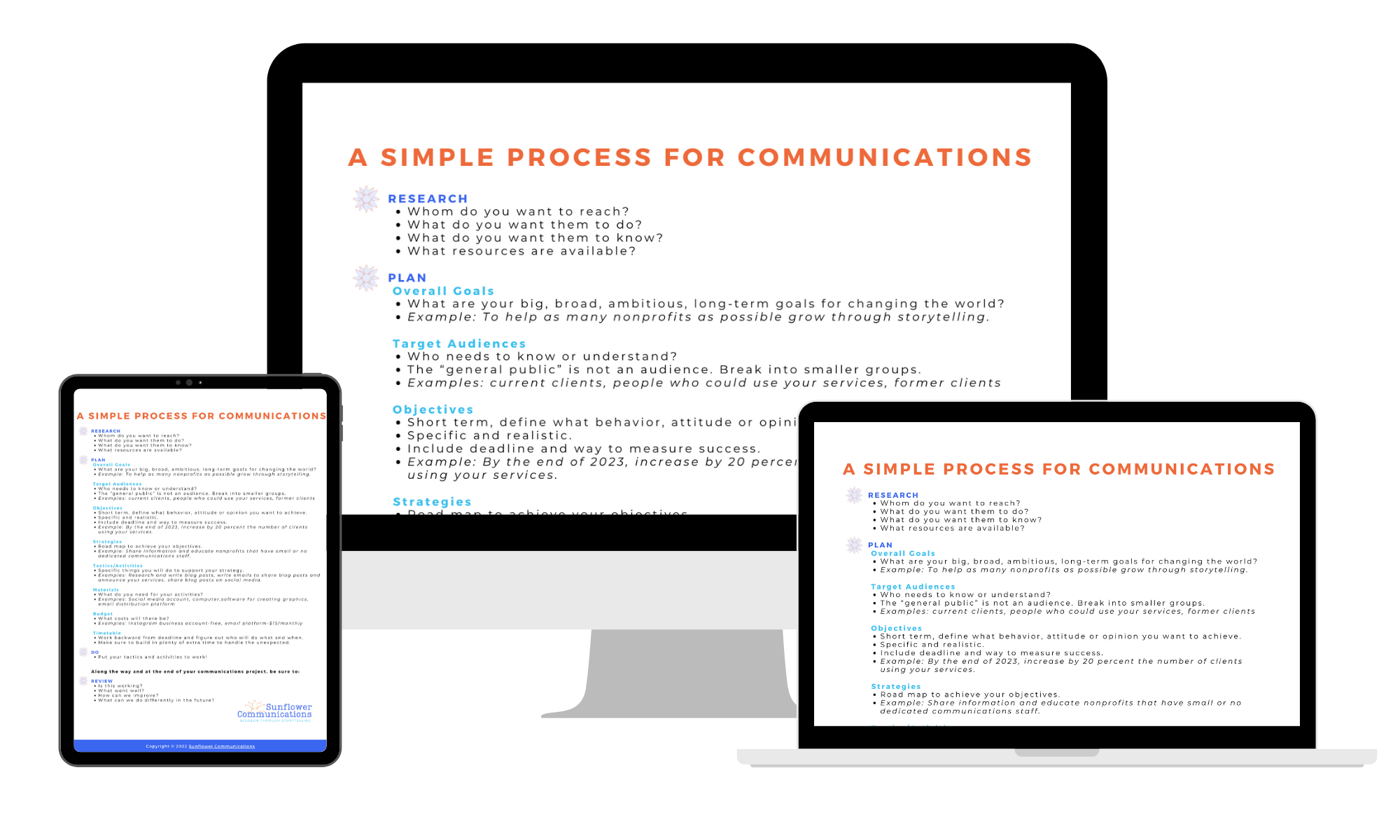Simplify Your Communications Process
The time-honored, four-step public relations process — Research, Planning, Implementation and Evaluation, or RPIE — is a large portion of the exam for Accreditation in Public Relations. And that’s for a good reason: It works.
RPIE makes you think about tactics, but also forces you to think strategically. Using this process also puts the focus on outcomes (how many people did you get to do the thing you wanted them to do) rather than outputs (how many emails did you send).
What it comes down to is that communications planning is a process. Below is a simplified look at the process:
RESEARCH
Begin by looking into:
Who do you want to reach?
What do you want them to do?
What do you want them to know?
What resources are available?
PLAN
Think about:
Overall Goals
What are your big, broad, ambitious, long-term goals for changing the world? For example: To help as many nonprofits as possible grow through storytelling.
Target Audiences
Who needs to know or understand? Remember: the “general public” is not an audience. Break that down into smaller groups. For example: Employees (often your most important audience), current clients, people who could use your services, former clients.
Objectives
Create objectives for your audiences. Objectives are short term and define what behavior, attitude or opinion you want to achieve. It’s important to be specific — and realistic. Include a deadline and a way to measure success: By the end of 2023, increase by 20 percent the number of clients using your services.
Strategies
Create a road map to achieve your objectives. For example: Share information and educate nonprofits that have small or no dedicated communications staff.
Tactics/Activities
Tactics are the specific things you will do to support your strategy. A few examples: research and write blog posts, write a series of emails to share blog posts and announce your services to potential clients, share blog posts on social media.
Materials
What do you need to execute your tactics? Do you need to set up a social media account, buy a computer, pay for faster internet service, subscribe to software for creating graphics, sign up for an email distribution service?
Budget
Consider your potential costs for carrying out your communications. For example, an Instagram business account is free, while subscribing to an email service such as Mailchimp or Constant Contact will have a monthly or annual fee depending on the size of your email list. Perhaps you could hire a consultant to help you; build that cost into your budget.
Timetable
Work backward from your deadline and figure out who will do what and when. Make sure to build in plenty of extra time to handle items that may come up that you haven’t thought about yet or have no way to predict.
DO
Put your tactics and activities to work!
REVIEW
At the end of project as well as during milestones along the way, consider:
Is this working?
What went well?
How can we improve?
What can we do differently in the future?
Get your handy cheatsheet
Click the button to instantly download your free communications process cheatsheet:
Need help with your communications process, strategies or tactics? Sign up for a complimentary, no-pressure 30-minute chat. I’d love to hear from you. 💙






